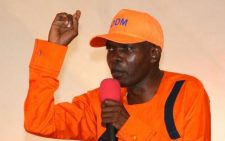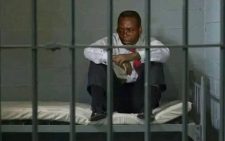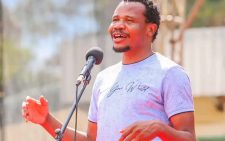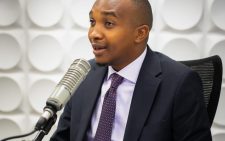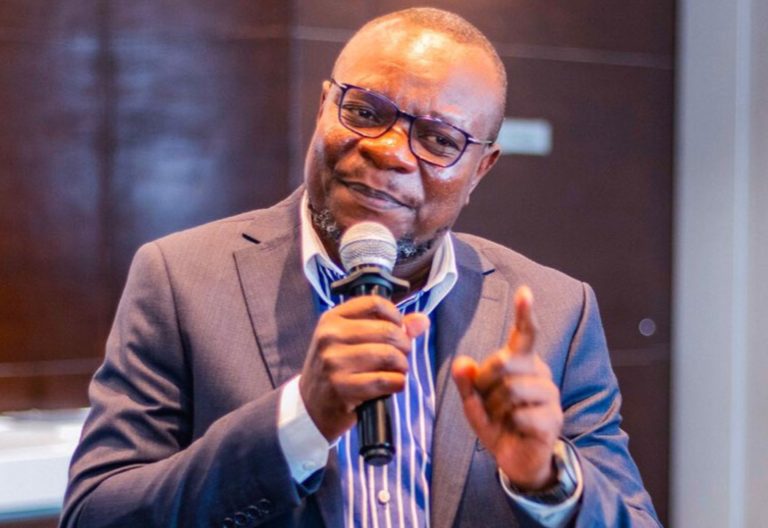Nithi bridge: How Ruto’s broken promise claimed the lives of 12
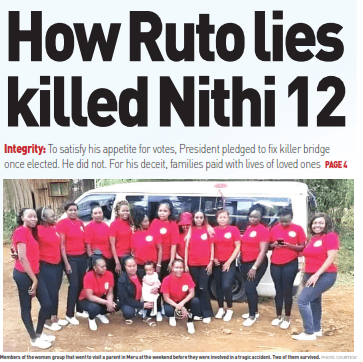
Even among the most optimistic of Kenyans, last Saturday’s tragic accident at the notorious Nithi bridge that claimed 12 lives has not helped to diminish the growing perception that President William Ruto is, at best, a master of empty promises – or even outright lies.’
To the contrary, the accident in which 10 adults and two children died has only helped buttress the refrain that the President’s constant promises are just that – empty talk. Hot air!
Early last year, the President made an undertaking that his government had set aside money to redesign the killer bridge in Tharaka Nithi county in a bid to reduce accidents at the blackspot.
“Following my meeting with local leaders yesterday, I have already directed the minister in charge of Transport to meet your governor immediately to decide whether to use the survey conducted sometime back or we come up with a new one,” Ruto said then. “We have already set aside funds towards the redesign of the road to stop people from dying at the spot.”
Dualling the bridge
Soon after the pronouncement, then Transport Cabinet Secretary Kipchumba Murkomen convened a meeting in March with Tharaka Nithi officials, led by Governor Muthoni Njuki and disclosed the government intended to realign, redesign and dual the bridge, and install speed bumps.
“We have already started the process to prevent further loss of lives at this blackspot,” Murkomen said then.
He explained that engineers would redesign sharp corners and convert the section between the Marima and Mitheru markets into a dual carriageway as part of a four-step action plan.
Earlier, while on the campaign trail in Chuka sub-county, Ruto had vowed to prioritise rebuilding the bridge, which has been the site of numerous fatal accidents, as he assured residents that fixing it would be a top priority within the first six months of his presidency.
But on Saturday evening, the President’s empty promise over the road returned to haunt him when the 12 were killed in a gruesome accident involving a van and a pickup truck at the infamous bridge on the Meru-Embu highway.
Police and witnesses said the accident involved a Nairobi-bound hired private Toyota Hiace and a Toyota Hilux headed toward Chogoria.
The 10-seater van collided head-on with the Meru-bound pickup at around 9pm, Tharaka Nithi police commander Zacheaus Ng’eno said.
Reconstructing the Nithi bridge is just one of the many projects promised by President Ruto that have remained mere promises.
Barely two years into office, Ruto has earned himself the unprecedented moniker of Kenya’s head of State with a penchant for promising the electorate almost everything regardless of budgetary constraints.
From Mombasa to Busia, Marsabit and Kajiado, the country is full of a litany of empty promises made by President Ruto in form of projects launched but have not taken off due to lack of funds.
Since taking over the reins of power on September 13, 2022, Ruto is yet to shed the campaign mode as he traverses the country and engages mammoth crowds in articulating developmental politics and seeking concurrence from villagers on the efforts his government is making in its transformative agenda.
Achilles heel
It is during such tours that the President, clearly in a bid to endear himself to the electorate and make his presence relevant, has made pronouncements that are turning out to be his Achilles heel ahead of 2027, when he is expected to defend his seat.
“President Ruto must realise that things have now changed and Kenyans are no longer the kind of people who never bothered about what was promised to them but never delivered,” says university lecturer and political analyst Prof Gitile Naituli. “He must realise the so-called Generation Z are apparently demanding transparency and accountability from their leaders.”
The Multimedia University don says Kenyans are more enlightened and aggressive in their determination to ensure their leaders fully respect and adhere to Article 10 (2) (c) of the Constitution that talks about good governance, integrity, transparency and accountability.
In a national TV interview earlier this year, Ruto attempted to address the issue of Kenyans lacking confidence in him, simply dismissing the claims as mere assumptions.
“There are Kenyans who watch you and I don’t know whether you are aware that they don’t trust and believe in what you say. Are you aware that a lot of Kenyans increasingly don’t associate the truth with you?” Linus Kaikai of Citizen TV asked in a joint media interview at the State House in Nairobi.
To which the President retorted: “That is your assessment because you have never associated the truth with me from the beginning. I told the people of Kenya that I would reduce the price of fertiliser from Sh7,000 to Sh2,500, I don’t know how that is a lie because they buy it at Sh2,500… Whether you believe me or not, facts will not change. Facts are not changed by who says it.”
According to Machakos Deputy Governor Francis Mwangangi, in whose Ukambani region lies several dream projects promised by Ruto, the problem seems to be lack of a strategy to initiate and implement development projects.
“The President has unfortunately lost the credibility and confidence of Kenyans. The number of empty promises are just way too much in comparison to actions. Leaders need to be truthful in their public pronouncements, which should be marched with action,” says Mwangangi.
He cites the construction of the Tala-Donyo Sabuk-Thika road and Katangi-Ikombe-Matuu road; the expansion of the Ruai-Tala-Kangundo-Mwala road; and the completion of the Yatta and Thwake dams as some of the promises that have simply remained on paper.
Also yet to be realised, Mwangangi says, is the cleaning up of the Athi and Nairobi rivers that the President promised soon after assuming power.
“In fact, his words still reverberate in my ears … as he categorically stated that the clean-up of the Athi and Nairobi rivers was to be done within the first six months of his administration. The same thing was to happen to the Thwake dam, but nothing has happened so far,” Mwangangi says.
And when he officially opened the Open University of Kenya at the Konza technopolis in Machakos, Mwangangi says, the President promised to ensure the dualling of a section of Mombasa Road from the Machakos turn-off to Salama.
“It is quite bad for the head of State to go out there making promises that he cannot keep. The President should always synchronise his public pronouncements with what the National Treasury has budgeted for,” he says.
For instance, Ruto, while touring Gatundu in Kiambu last year, promised to increase the capacity of the Karimenu II water dam from the present 70 million cubic metres to at least 90 million cubic metres by July last year for Sh5.7 billion so that it could effectively serve residents of the Kiambu, Thika, Juja, Ruiru and Githunguri sub-counties. At the same function, Ruto also ordered then Water Cabinet Secretary Alice Wahome to immediately pay Sh4.2 billion owed to Gatundu North residents after they ceded part of their land to pave the way for the construction of the Sh24 billion Karimenu II dam.
“All the two promises have never been fulfilled to date and nobody bothers to talk about them anymore and as it seems it has become routine for the President to make promises that he can hardly actualise,” Rose Wanjiku, a resident of Magumu, told People Daily yesterday.
Cooling plants
In subsequent visits to Kiambu last year, the President promised to ensure the allocation of Sh400 million each for construction of the Wangige, Githunguri, Githurai, Madaraka (Thika) and Kangangi markets.
The President’s promise to supply 20 milk cooling plants to dairy farmers in Kiambu has also remained a pipe dream.
Other pronouncements from the President that have remained phantoms include buying air tickets for Kenyans going to work abroad; reviving the Galana-Kulalu food project with 370,000 acres under irrigation; connecting 6,000 households in Tana River to the national grid under the Last Mile Connectivity programme; construction of hostels at Ngao Secondary School in the county for Sh5 million; and construction of four markets in the same county for Sh250 million.
Others include the distribution of low-cost gas cylinders to 50,000 households, building the Ruringu and Kameriny stadiums by July this year.
We could not reach government Spokesman Isaac Mwaura, as he neither picked up our calls nor responded to short text messages.

